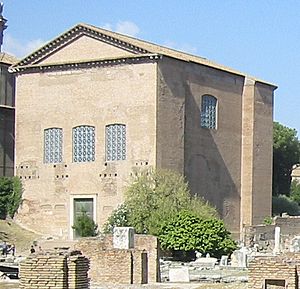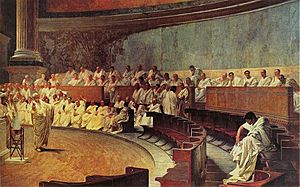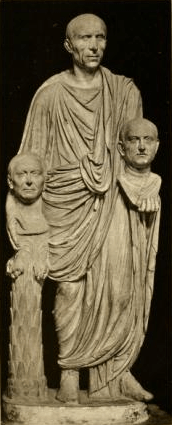Roman Senate facts for kids

The Roman Senate was a very old and important group in Ancient Rome. It started when the city of Rome was first founded, around 753 BC. It lasted through the time of the kings, the Roman Republic, and the Roman Empire. This means it was around for over 1000 years!
The word "senate" comes from the Latin word 'senex', which means "old man". This is because the Senate began as a group of wise elders who advised the kings. During the middle of the Roman Republic, the Senate became the most powerful group in Rome. Later, when emperors ruled, the Senate lost some of its power.
After Emperor Diocletian moved the main government away from Rome, the Senate became more like a local city council. But the idea of the Senate was still strong. So, Emperor Constantine II even created a new Senate in the city of Constantinople.
What Did the Senate Do?
The Senate made decisions called senatus consultum. These were like official advice from the Senate to important Roman officials, called magistrates. Even though they were just "advice," people usually followed them.
The Senate used this advice to guide the magistrates, especially the Consuls. Consuls were the top officials. The Senate helped them decide how to handle military conflicts and wars.
The Senate also had control over the government in Rome itself. Only the Senate could approve spending public money from the treasury. As the Roman Empire grew, the Senate also watched over the different provinces. These provinces were like states or regions, and they were governed by former consuls and other officials. The Senate decided which official would govern which province.
Senators were often from important families called patricians. But men who had done great things for Rome could also become senators. At first, there were about 100 senators. This number grew to 900 at one point, but Emperor Augustus later reduced it to 600. Even with 600 members, usually only about 100 to 200 senators were actively involved at any time. Rome had other powerful groups too, like assemblies and emperors. But the Senate always played a part in Rome's history.
Images for kids
-
The so-called "Togatus Barberini", a statue depicting a Roman senator holding the imagines (effigies) of deceased ancestors in his hands; marble, late 1st century BC; head (not belonging): mid-1st century BC
-
The Palazzo Senatorio, originally built to house the revived Senate during the Roman Commune period
See also
 In Spanish: Senado romano para niños
In Spanish: Senado romano para niños





